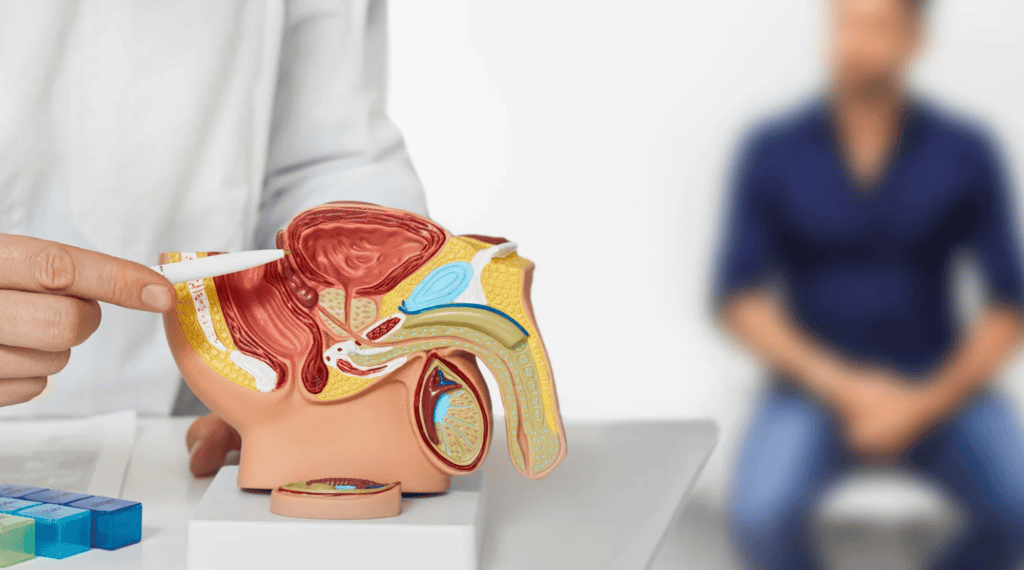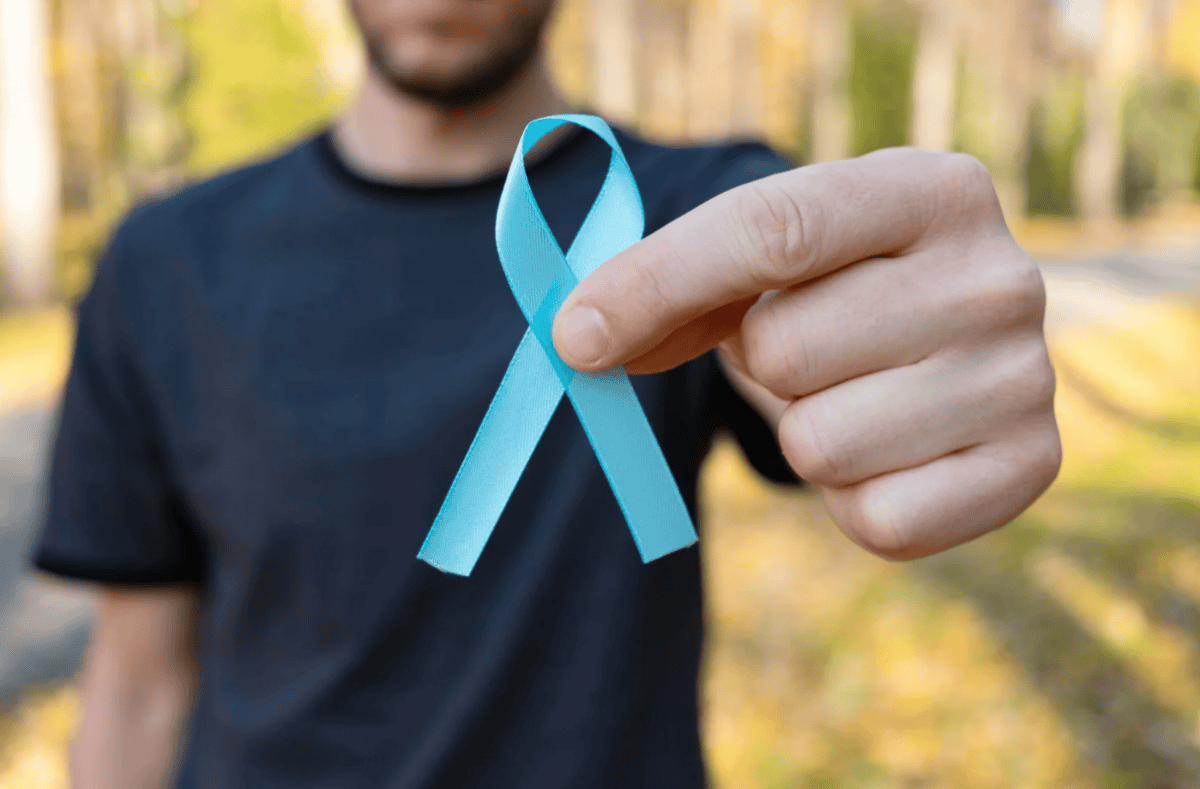This post aims to provide information about localized prostate cancer, how it affects men diagnosed with this condition, and how to manage anxiety.
Ask 100 people what disease they fear the most. Chances are it’s cancer. Moments after hearing the heart-stopping words “you have cancer”, there is a dread that life, as one has known it, is over. Despite the patient’s rational knowledge that it’s too soon to panic, a black cloud of lingering anxiety rolls in.
The National Cancer Institute says, “Anxiety is unease, fear, and dread caused by stress.” Stress occurs as a patient is plunged into an alien world of appointments and reports written in incomprehensible clinical terms. During further testing the patient may be prodded, pricked, scanned or even cut open and sutured before treatment options are generated.
In addition to his/her own medical history, the patient is asked to comb through memories of family members who may have had cancer of any type. Finally, a treatment decision must be made, implemented, recovered from—and its results monitored for recurrence, sometimes for the rest of the patient’s life. Who could not help but be anxious?
It’s no wonder, then, that a cancer diagnosis causes distress. In fact, after hearing the diagnosis, the natural act of anticipating or imagining next steps triggers even more of the inner fight-or-flight response that is the starting gate for runaway anxiety.
Localized Prostate Cancer and Anxiety
Although anxiety is a universal first response to a cancer diagnosis, its intensity and duration differs from one person to another. However, no matter what type of cancer it is, a patient initially worries about survival and pain. The “C word” is subconsciously linked with the image of one’s own cells turning traitor, invading their host from within even unto death.
Will I suffer? How much time do I have? If I die, what will happen to my loved ones? Clinical professionals should be empathic and screen patients for anxiety. They should evaluate them, help them name their worst fears and emotionally adjust.
This is as true for localized prostate cancer as for any other cancer—but there is an aspect of prostate cancer that distinguishes anxiety over this cancer from other types. Prostate cancer is intrinsically bound up with a man’s gender identity, just as breast cancer is for a woman’s gender identity. It is also among the least life-threatening cancers when detected early.
Prostate cancer is the most common non-skin cancer among men. Roughly one out of eight men will develop it during his lifetime. However, thanks to screening (PSA blood test and MRI) most cases are now detected and diagnosed when they are early stage (confined to the gland) and Grade Group 1-2 (low-to-favorable intermediate risk).
At that point the disease is still localized—that is, has not yet begun to spread—and most cases are not yet aggressive so treatment, including monitoring through Active Surveillance, is likely to result in 10-year survival rates approaching 100%.
In our practice, we find that men diagnosed with low- to favorable-intermediate risk disease quickly get over their initial fear of suffering and death when we go over their diagnostic results and explain this to them.
However, whole-gland treatment with intent to cure, i.e. radical prostatectomy or external beam radiation, can cause collateral damage to urinary, sexual or bowel function. This is because of male pelvic anatomy.
The urinary outlet from the bladder passes through the prostate (prostatic urethra), the neurovascular bundles that control erection hug both sides of the gland, and the largest area of the prostate’s peripheral zone is at the back of the gland, closest to the rectal wall.
It is not an overstatement to say that men’s fear of impotence or wearing diapers is a close second to their fear of death. Although prostate cancer has long been considered an old man’s disease, prostate cancer incidence has been rising in very young men.
These men are still establishing their careers, or are enjoying working at the top of their game. They have families. They are sexually active. In general, they are secure in their masculine identity.
For prostate cancer patients in their 40s, 50s and often 60s, the prospect of saving their lives at the price of their manhood appears as a cruel trade-off. It is as important for clinicians to recognize this as it is their patients’ fear of death, because losing their manly quality of life is a “little death” in itself.
Thus, for the sake of their physical and mental well-being, it is clinically important to help patients identify this source of anxiety and to allay their fears.

Reassuring Facts About Prostate Cancer
While doctors can’t make an iron-clad guarantee that a patient won’t leak urine or have erectile dysfunction after treatment, urologists, oncologists and radiologists should not shy away from honest and transparent discussions with patients, and be prepared with key assurances such as:
- There are more treatment choices today than ever before. Thanks to state-of-the-art diagnostic tests (bloodwork, MRI, biopsy, genomic risk classifiers), a patient can be qualified for treatments tailored to his individual case and lifestyle preferences.
- Today’s advanced technologies raise survival rates while also lowering the rates of treatment-related urinary, sexual and bowel side effects. Methods for qualified patients include: robotically assisted surgery; calibrated targeted radiotherapy like stereotactic body radiation; precise image-guided minimally invasive focal ablation like focal laser ablation or TULSA focused ultrasound; and sophisticated monitoring of Active Surveillance as an alternative to immediate treatment.
- Should treatment result in impaired function, whether short- or longer-term, there are many excellent solutions that allow patients and their partners to maintain intimacy and dignity, and their medical team is here to assist them (they won’t be abandoned).

Final Words
To sum up, patients with localized early-stage prostate cancer need not fear they are living with a time bomb or death trap in their bodies. When they are educated about the nature of their disease, most men are relieved of their anxiety over survival.
However, men experience distress and anxiety over fearing their loss of manhood. With additional reassurance, the prospect of treatment becomes less of a trade-off and more of a win-win. It’s up to clinicians to enlighten their prostate cancer patients on both levels to offer them a positive future they can look forward to.
NOTE: This content is solely for purposes of information and does not substitute for diagnostic or medical advice. Talk to your doctor if you have health concerns or questions of a personal medical nature.


